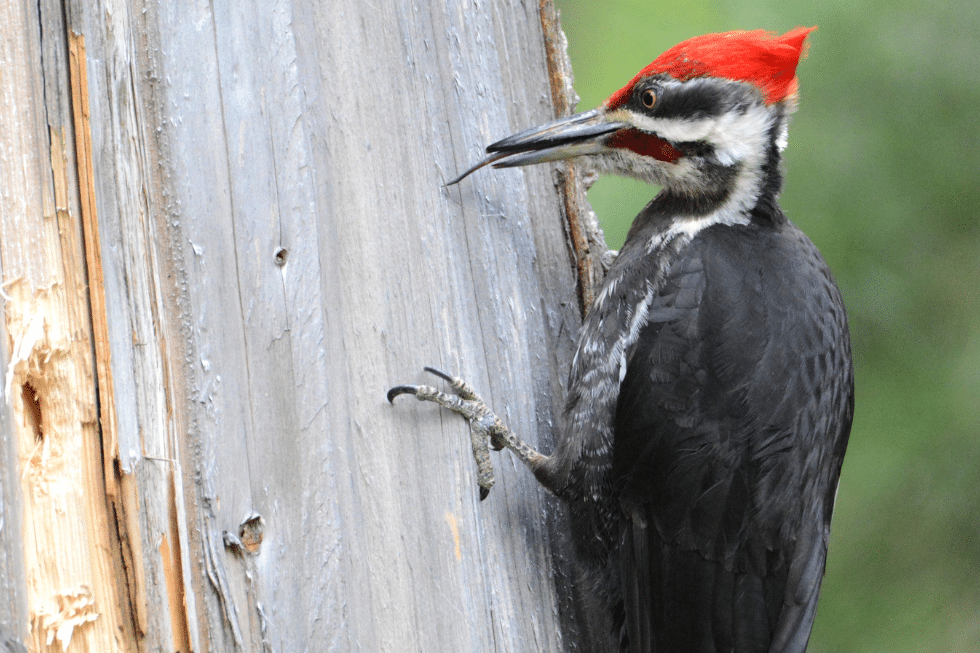The Migratory Birds Regulation (2022) (MBR), prohibits the capture, kill, take, injure or harassment of migratory birds without a permit and protects migratory bird nests when they contain a live bird or viable egg. As of July 2022, there is also year-round protection for 18 migratory birds species who re-use their nests; these birds cannot be destroyed, damaged, disturbed or removed.
Pileated Woodpecker
From those 18 species of migratory birds in Canada whose nests are commonly re-used, the most common one encountered in the Lower Mainland’s regular forest vegetation removal is the Pileated Woodpecker (Dryocopus pileatus) – a crow sized woodpecker.
Protection of its Nest and Cavities
Nests of Pileated Woodpeckers are commonly reused for several years by this species and other migratory birds who are often not capable of excavating their own cavities. There is extensive documentation on the importance of the Pileated Woodpecker, and as of July 2022 in the MBR, it has been defined as a keystone species (meaning it has a disproportionately large effect on its natural environment relative to its abundance) for the cavity nesting community. Cavities are a critical and limiting resource for many migratory birds, both for nesting and for overwinter survival. Thus, the MBR 2022, provides protection for three years for this species and its nest in forested areas if occupied by a migratory bird for nesting.
When can you remove a Pileated Woodpecker Nest?
The regulations do provide a mechanism to remove these nests when it has been unoccupied for a three-year period and reported through the Abandoned Nest Registry.
A nest can also be removed in forestry operations, when a tree that is considered a danger to workers contains a Pileated Woodpecker nest cavity. In this case, both the MBR 2022 and the provincial laws regarding health and safety would need to be followed. As the MBR 2022 protects the nest of the Pileated Woodpecker, the nest would need to be avoided. To ensure safety for workers, a buffer could be maintained around the tree, within which workers are not to enter.
A permit may be issued to damage, destroy, disturb or remove the nest if:
- the creation of the nest by the Pileated Woodpecker is causing or is likely to cause danger to human health or to public safety – meaning that the nest cavity has compromised the structural integrity of a utility pole or structure for instance;
- The proponent owns, leases or manages the land where the structure is situated.
How Can We Help?
Keystone Environmental can assist clients in the process of confirming nest use and opportunities for possible nest relocation. For more information about how we can further help you, please contact Libor Michalak, (R.P.Bio., QEP), Senior Project Manager.
#EnvironmentalConsulting #MigratoryBirdsRegulation #PileatedWoodpecker
Source:
Government of Canada, FAQ, Migratory Birds Regulation, 2022
Government of Canada, Fact Sheet, Nest Protection under the Migratory Birds Regulation, 2022
Government of Canada, Birds Protected Under the Migratory Birds Convention Act

